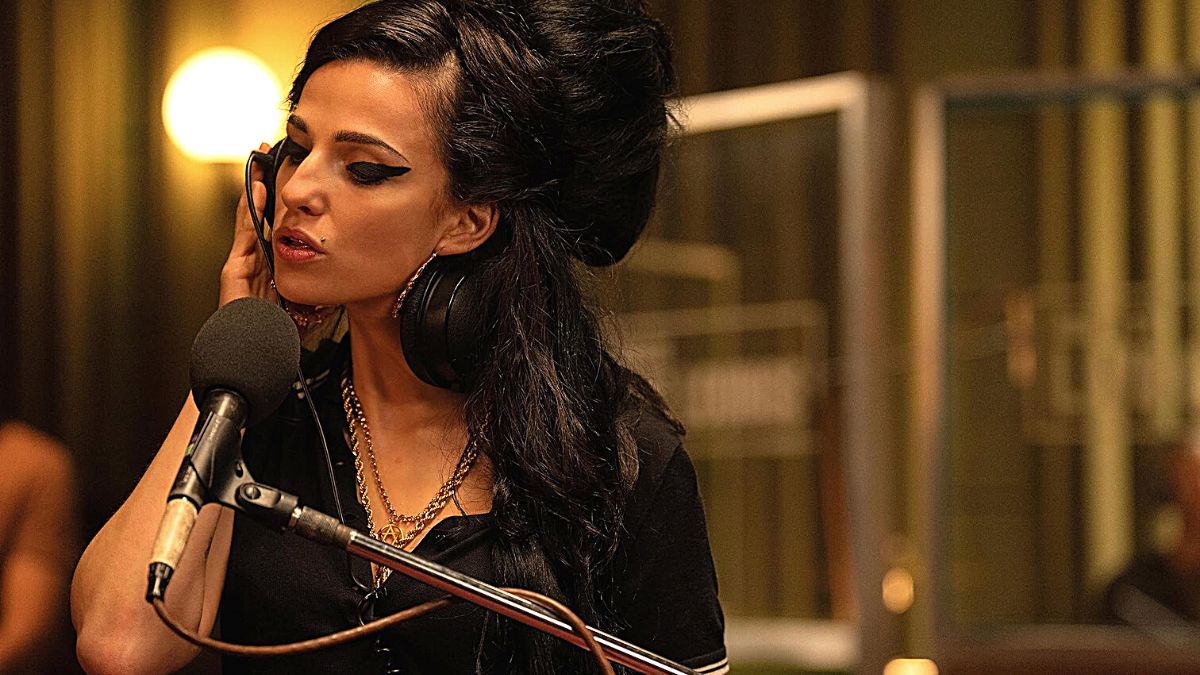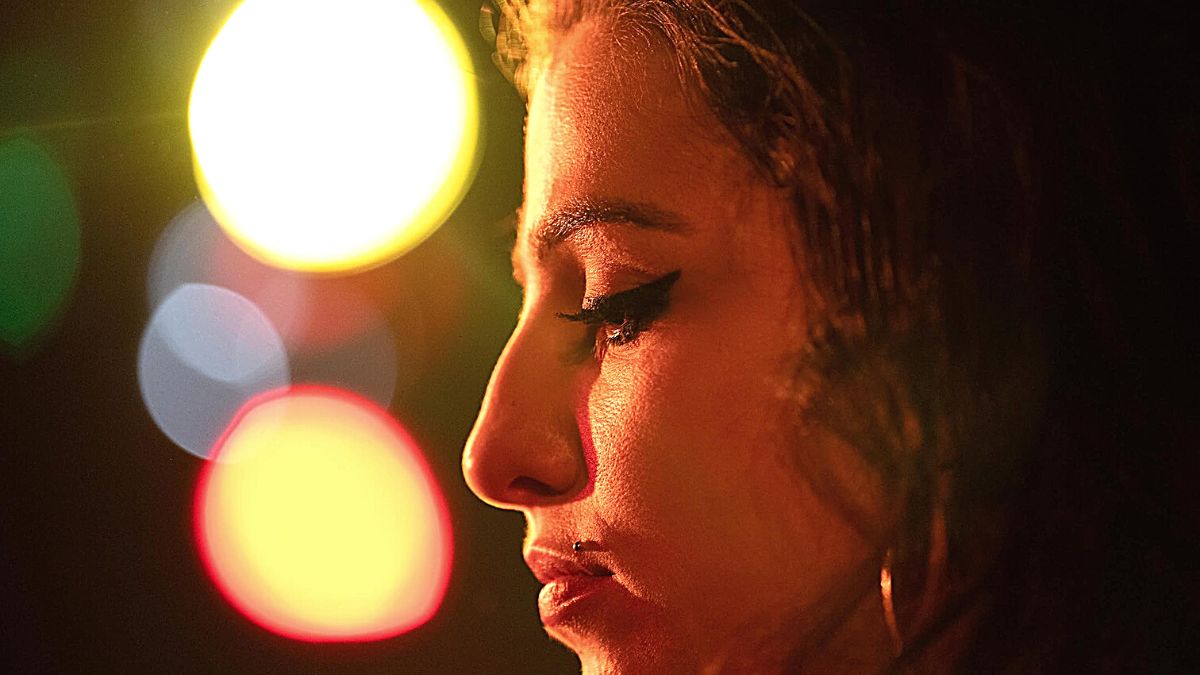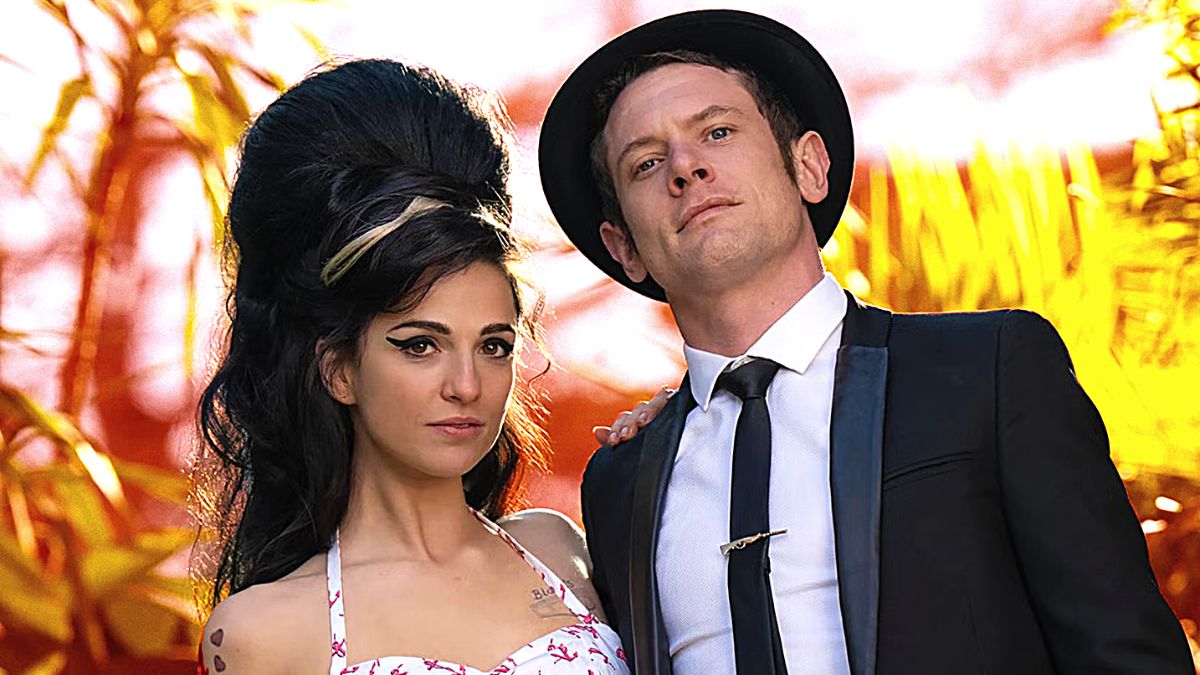Director Sam Taylor-Johnson says that Back to Black is not a biopic, but a love story. I would argue that it’s neither.
Despite its brilliant, singular moments, Taylor-Johnson’s latest seems unsure of what, exactly, it does want to be. Sure, the love story between Amy Winehouse (played here by a spirited Marisa Abela) and Blake Fielder-Civil (Skins‘ Jack O’Connell) is central to the film, just as it was to Amy’s life, but it’s never explored in any meaningful way.
At the same time, the chapters of Winehouse’s life singled out for filmic inclusion by Taylor-Johnson and writer Matt Greenhalgh seem somewhat disorganized and arbitrary. The fact that this is not a complete and detailed retelling of Amy’s life isn’t inherently negative, it’s just that the criteria for what the filmmakers chose to include are foggy at best.
What ultimately saves Back to Black from its disheveled self are its genuine attempts at getting intimate with Amy Winehouse, in the best possible way. Hers was infamously a life of tumult, excess, darkness, and exploitation, which — ethical discussions aside — undeniably provides rich material for a powerful, dramatic, and provocative story. The internet preemptively assumed that that’s the tack Back to Black was going to take; that it would exploit Amy’s trauma and death to create the most sensationalist film possible, and attract the attention of audiences by way of morbid curiosity. It was a pleasant surprise, then, that morbid exploitation is not among the film’s issues.
There’s so much sympathy for Amy in Back to Black, which is extended, in turn — and some would argue unjustifiably — to her ex-husband, and to her father, Mitch Winehouse (Eddie Marsan). There are no villains and no victims in Taylor-Johnson’s film, and there is a nobility in that choice. On the other side of the coin, in its reluctance to judge its characters, Back to Black fails to make any substantial statement about the questionable choices made by both men, as well as Amy’s management, at a time when she was at her most vulnerable. Because of her untimely death, history has painted Amy Winehouse as a hopeless victim, and while there’s some truth to that perspective of the story, it’s also dishonest to believe that that encompasses the full scope of her life, her work, or her legacy. We obviously can’t and wouldn’t speak for Amy, but our best bet is that she wouldn’t accept that depiction, either.
Back to Black begins with a teenage Amy sorting through a box of memories with her grandmother and “everything icon,” Cynthia (Lesley Manville). Amy swoons over her grandma’s pictures and compliments her style, which she would later emulate, and daydreams about the older woman’s past life singing at Ronnie Scott’s, the famous Soho jazz club. Cynthia assures her granddaughter that with a voice like hers, there is no chance she won’t become a star in her own right one day, too. Later, one of the movie’s most memorable scenes unfolds at that same jazz club.
Back to Black never stirs too far from this grounded approach; it wisely avoids big performance set pieces that don’t serve the story, or generic retellings of the artist’s rise to fame. Instead, it builds on this closely-observed dynamic of granddaughter/grandmother, mentee/mentor, with lovely scenes between Abela and Manville throughout. As with all grandmas, Cynthia takes it easy on Amy, extending to her the most uncomplicated, no-strings-attached kind of love. So when Cynthia dies from lung cancer, Amy’s solid emotional ground crumbles beneath her and she must scramble for comfort, finding it in music, and Blake, and more tragically, in alcohol/substance abuse and bulimia.

Abela’s portrayal — like Back in Black as a whole — captures Amy as an irreverent fantasist with her head in the clouds, who nonetheless knew exactly who she was, and who she wanted to be. It’s this fertile soil of fantasy from which Amy’s slight unawareness of the constraints and obstacles of the real world stemmed, and which allowed her to strive for no less than what she and her talent deserved. Unfortunately, however, Amy’s no longer her own top priority from the moment Blake enters her life. She transfers the take-no-prisoners approach she used to go to bat for her career, and applies it to becoming Blake’s ultimate defender, often oblivious to his nefarious influence.
Either for the sake of wider public appeal, or to err on the side of caution after the backlash generated by on-set photos leaked during filming, Back to Black feels rather clean and glossy. It lacks rock-and-roll edge, and Abela’s version of Amy is significantly less scandalous than the real deal. However, this dearth of punch in the film is compensated for by a number of really successful emotional beats during which, for a minute, you feel you’re allowed a window into this character’s soul. I say “character,” because no one except Amy and those closest to her can ever really know what she was feeling in these critical moments. Nevertheless, Taylor-Johnson treats her subject as a fleshed-out human being; Back to Black’s Amy isn’t a soulless representation-of-a-representation-of-a-representation that so often plagues these mega-celebrity biopics.
It’s when she delivers an intimate performance for a handful of people, walks around New York City, converses with grandma, or takes a moment to reflect after making Grammy history, that you find yourself truly pondering the tragic loss of Amy Winehouse; not just her once-in-a-generation talent, but also her very brief, very special life.
The film’s human, approachable quality is further amplified by the decision to shoot in the real London locations frequented by Amy; her favorite Camden pubs, tattoo parlors, and Soho Jazz clubs bring Back to Black closer to the life it wishes to capture.

Beyond aesthetics and tone, where the film most struggles is with pacing, with several whiplash-inducing time jumps breaking up the rhythm and flow. As previously mentioned, there is also no real through-line connecting the moments that Taylor-Johson and Greenhalgh deemed important enough to include, which becomes particularly noticeable in the end stretch. The last scene in the film enjoys a lot of its best qualities (namely, the intimacy with Amy), yet it feels unnervingly sudden. Upon further reflection, however, it could be read as the filmmaker’s attempt to translate the same kind of feelings the young singer’s death elicited from all of us on July 23, 2011.
The picking and choosing of which facts to mention and which to overlook also results in what has been the biggest criticism wielded against Back to Black; its friendly portrayals of both Mitch Winehouse, and Blake Fielder-Civil. Their lowest moments, some of which are known to the public, are nowhere to be seen — such as Mitch bringing a camera crew to a holiday that was meant to take Amy away from the British tabloids, or commenting on her breast implants on a morning show, or even any of Blake’s darker and more toxic behaviors in their relationship (there is an emphasis, however, on Amy physically attacking him, so it’s easy to find that imbalance odd, to say the least).
The film really sells Amy and Blake’s romance, aided by Abela and O’Connell’s scintillating chemistry, and frames their divorce as the latter’s attempt to be the bigger person after realizing the harm they brought to each other’s lives. But regardless of Taylor-Johnson’s best intentions, to omit the very nefarious things they did together, and that Blake specifically did to Amy, and opt instead for simply vaguely mentioning them, serves to whitewash his role in her demise.
Some narrative weaknesses, and a few with its structure, are palpable enough. Yet almost paradoxically, Back to Black shines in the integrity and compassion of its portrayal of Amy herself as a stand-alone character — so long as you manage to ignore the dubious characterization of the other components that played a part in her fate.
Back to Black
There’s a lot of compassion in ‘Back to Black’ for its troubled subject, but its best intentions become its worse mistakes when it fails to direct any semblance of a critical look at the multiple tragic events in Amy Winehouse’s too-short life.


